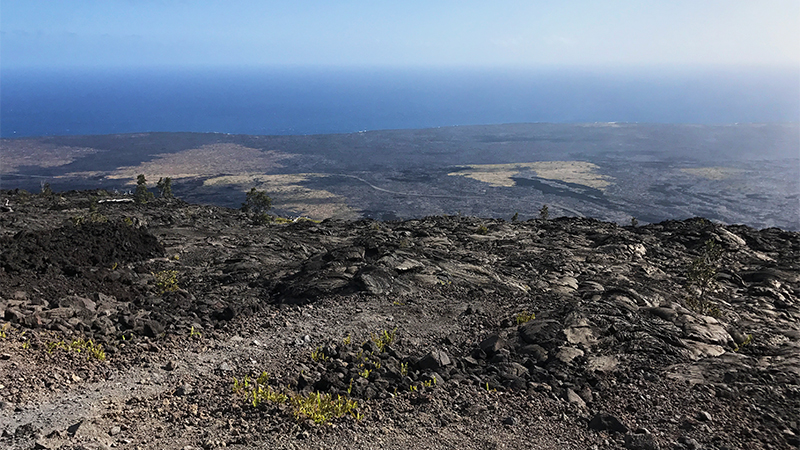
Hawai’i Volcanoes National Park extends from sea level to 13,677 feet in elevation and encompasses the summits and rift zones of two of the world’s most active volcanoes, Kīlauea and Mauna Loa. Kīlauea has been in nearly continuous eruption since 1983.
There are two main paved roads that provide access to all the incredible things to do in the Hawai’i Volcanoes National park:
Driving to the end of Chain Of Craters Road is an 18.8 mile out and back drive (38 miles round-trip) beginning near the Devastation Tail parking area on Crater Rim Drive and descending 3,700 feet to the Hawai’i coastline. The drive takes you to the end of the road where lava has been covering 10 miles of the road since 1986 and back the same way you came.
Chain Of Craters Road has an interesting history:
- Formerly called Cockett’s Trail, the original road ended at the rim of Makaopuhi Crater and was dedicated in April, 1928.
- In 1965, Chain Of Craters Road was expanded to reach the coastline, but in 1969 it was partially buried during the Mauna Ulu eruption.
- When the Mauna Ulu eruption ended, Chain Of Craters Road was realigned and in June 1979, reopened to the public.
- Since 1986, lava has repeatedly flowed over Chain of Craters Road, covering nine miles of the road and adding hundreds of acres to the national park.
- In June 1989, Waha‘ula Visitor Center and associated buildings were covered by lava, in August 1997, the Waha‘ula Heiau was buried by lava, and in 1992, the Kamoamoa village site, heiau, campground, picnic area, and black sand beach were covered by lava.
- In 2003, pāhoehoe lava flows covered Chain of Craters road just past the Hōlei Sea Arch, which is where Chain Of Craters Road ends today.
- In June 2014, lava from Kīlauea Volcano’s Pu’u’ Ō’ō vent began slowly flowing toward the town of Pāhoa, threatening to cover the community’s two main access routes. An emergency access route has been created along the previously lava-covered portion of the old Chain of Craters Kalapana Road.
Below is a list of all the things to do along the gorgeous Chain Of Craters Road in Hawai’i Volcanoes National Park — click the pink buttons to learn more about each attraction:
Lua Manu Crater
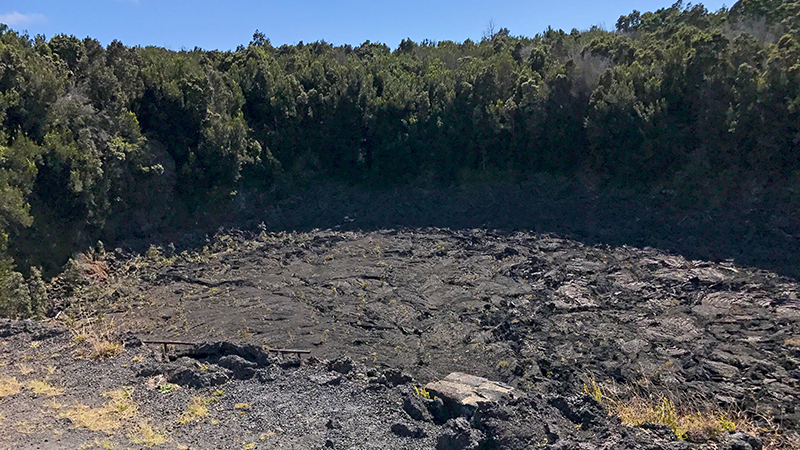
0.5 miles from Devastation Trail and the start of Chain Of Craters Road, and 3.8 miles from the Kīlauea Visitor Center.
Formed approximately 200 years ago, Lua Manu is a pit crater that is roughly 300 feet across and 125 feet deep. It is the uppermost crater along the Chain of Craters in the upper east rift zone.
Puhimau Crater
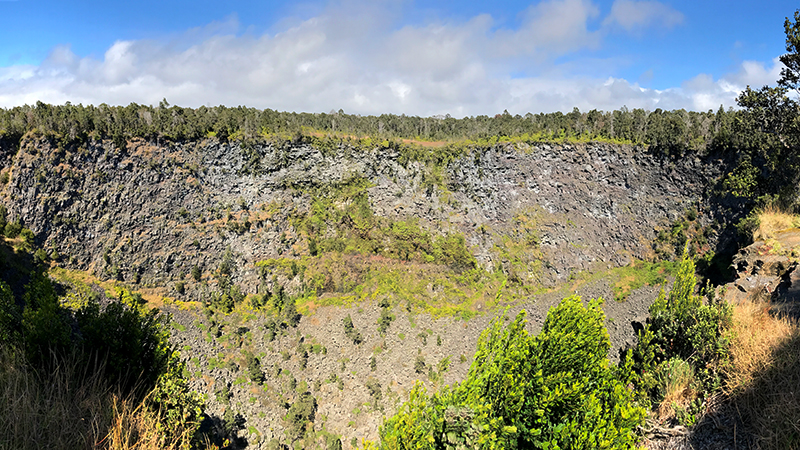
0.5 miles from Lua Manu Crater, 1.0 mile from the start of Chain Of Craters Road, and 4.2 miles from the Kīlauea Visitor Center.
Puhimau Crater is a 400 foot wide, 650 foot long, 500 foot deep, oval-shaped crater. The crater and the surrounding area is part of the Puhimau Thermal Hot Spot and because a large channel of magma flows below the areas, if conditions are just right, you can actually see the crater steaming.
Ko’oko’olau Crater
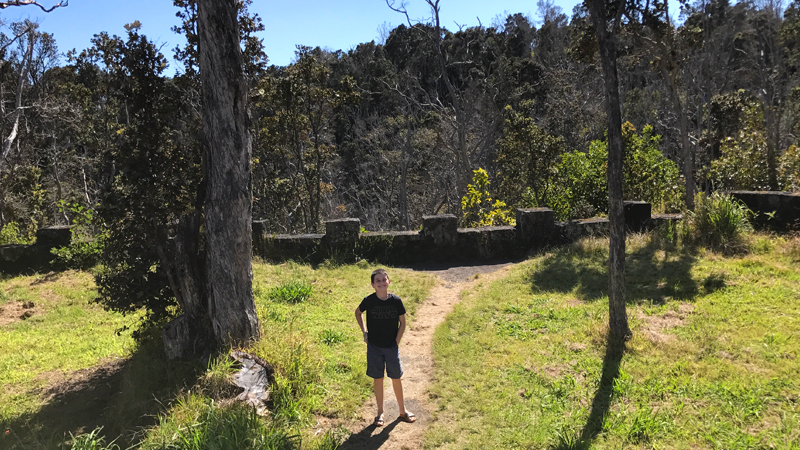
0.5 miles from Puhimau Crater, 1.5 miles from the start of Chain Of Craters Road, and 4.7 miles from the Kīlauea Visitor Center.
Ko’oko’olau Crater is a pit crater, created from magma below the surface suddenly draining and the ground above collapsing. Ko’oko’olau has had no lava for more than 200 years and the crater view is almost completed obstructed by trees and vegetation.
Hilina Pali Road And The Hilina Pali Overlook
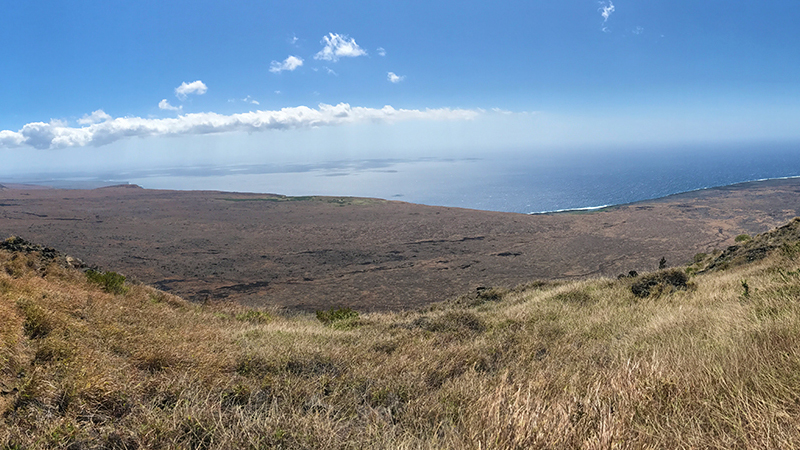
0.8 miles from Ko’oko’olau Crater, 2.3 miles from the start of Chain of Craters Road and 5.6 miles from the Kīlauea Visitor Center.
Hilina Pali Road is a nine mile narrow road that travels from Chain Of Craters Road to the awe-inspiring Hilina Pali Overlook. The 1.5 mile wide, 50 foot tall Koaʻe Fault stretches 10 miles down the left side of the road. At the end of the road is the 12 mile long Hilina Pali Overlook sits at 2,282 feet elevation and offers visitors breathtaking views of the the Ka’ū desert, the Hawaii coastline, and the sparkling blue Pacific ocean.
Pauahi Crater

2 miles from the Ko’oko’olau Crater Lookout, 3.3 miles from the start of Chain Of Craters Road, and 6.6 miles from the Kīlauea Visitor Center.
Pauahi Crater, at almost 2000 feet long, 300 feet wide, and nearly 500 feet deep, was created by a an eruption in 1973 lasting 31 days. From the parking area, a short boardwalk extends to the to rim of Pauahi Crater and near the end of the boardwalk, if you look carefully, you can also see the fissure that dumped lava into the crater in 1973.
Mauna Ulu Crater Eruption Trail

0.3 miles from Pauhai Crater, 3.7 miles from the start of Chain of Craters Road, and 7 miles from the Kīlauea Visitor Center.
Located along the east rift zone of Kīlauea, Mauna Ulu is a volcanic cone that erupted in several phases from May 24, 1969 to July 22 of 1974. The Mauna Ulu Eruption Trail is a super short 0.1 mile trail to the 1969 eruption fissure and the lava splatter zone (called a rampart).
Mau Loa O Mauna Ulu
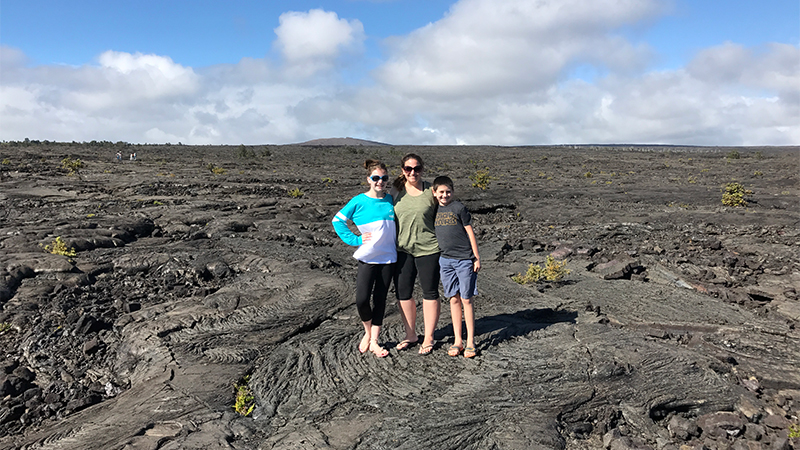
2.7 miles from the Mauna Ulu Crater Eruption Trail, 6.4 miles from the start of Chain of Craters Road, and 9.7 miles from the Kīlauea Visitor Center.
From the roadside pullout, you can see Mauna Ulu in one direction and the sparkling, blue Pacific Ocean in the other. For miles in all directions, the sprawling hills and cliffs are blanketed in smooth, curving, rolling, black pahoehoe lava originating from the 1969-1974 eruption of Mauna Ulu. A short paved trail leads to the Mau Loa O Mauna Ulu observation deck that sits at 2,959 elevation.
Kealakomo Lookout
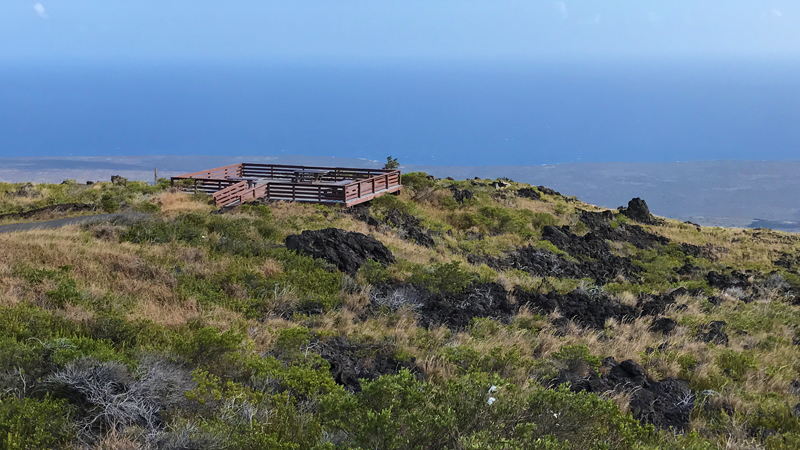
3.5 miles from the Mau Loa O Mauna Ulu Lookout, 9.9 miles from the start of Chain Of Craters Road, and 13.2 miles from the Kīlauea Visitor Center.
Perched on the edge of the Hōlei Pali cliff, 2,000 feet above sea level, the Kealakomo Lookout offers visitors spectacular panoramic views of the Pacific Ocean, the Hawaii coastline, and vast lava flows. Kealakomo Village was an ancient Hawaiian coastal village covered by lava in 1971 during the Mauna Ulu eruption.
Pu’u Loa Petroglyphs
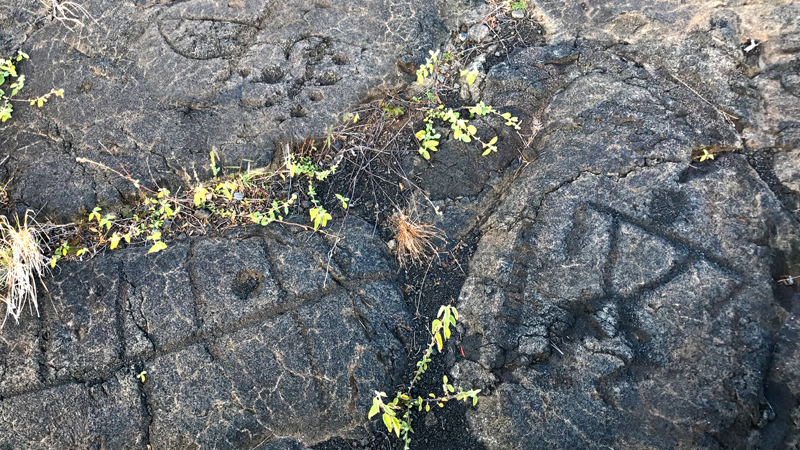
6.4 miles from the Kealakomo Lookout, 16.3 miles from the start of Chain Of Craters Road, and 19.6 miles from the Kīlauea Visitor Center.
The Pu’u Loa Trail is a moderate, 0.75 mile, out and back hike (1.5 miles total) to an elevated viewing boardwalk in the middle of the Pu’u Loa Petroglyphs. With more than 23,000 stone carvings, the Pu’u Loa Petroglyph field is known as the hill of long life and is one of the most extensive petroglyph fields in Hawaii. The petroglyphs document the life of native Hawaiian people and include pukas, circles, geometric designs, human figures, hooks, canoe sails, starfish, and other designs.
Hōlei Sea Arch Viewing Area
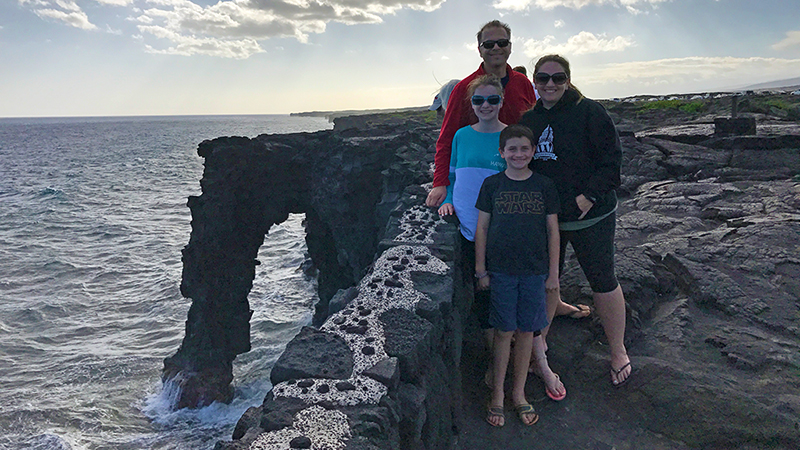
2.5 miles from the Pu’u Loa Petroglyphs, 18.8 miles from the start of Chain Of Craters Road, and 22.1 miles from the Kīlauea Visitor Center
Directly across from the ranger station at the end of Chain Of Craters Road, is a short trail to the steep, rocky lava cliffs lining the coastline and the magnificent Hōlei Sea Arch. The Hōlei Sea Arch, created within the last 100 years, is a 90 foot tall arch carved out of 550 year old steep lava cliffs. This sea arch has a limited lifespan and will eventually disappear into the ocean.
Know Before You Go
- Hawai’i Volcanoes National Park is located off HWY 11, Hawai’i 96718 on the southeastern part of the Island of Hawai’i, in the districts of Ka’ū and Puna. It is 30 miles from Hilo, 96 miles from Kailua-Kona, and 125 miles from Waimea through Hilo via HWY 19 and HWY 11.
- Admission fee is $25.00 per personal vehicle and is good for seven days. Free admission days are on Martin Luther King, Jr. Day, the first day of National Park Week, National Public Lands Day, and Veterans Day.
- Hawai’i Volcanoes National Park is open 24 hours a day, everyday, year round.
- It’s okay to wear sandals or flip flops, but bring tennis shoes in case you want to hike.
- The weather may be hot and humid and cool, windy, and rainy all in the same day. Come come prepared with layers, raingear, jackets, gloves and hats.
- Other than a few snacks for sale at the Kīlauea Visitor Center and Jaggar Museum, there is nowhere to get food or drinks anywhere in the park. Be sure to bring a lot of water, food, and snacks, especially if you plan on doing any hiking.
- There are no services (water, gasoline, or food) on Chain of Craters Road. Accessible restrooms are located at Mauna Ulu parking lot, the Hilina Pali Overlook, and the Hōlei Sea Arch parking lot.
- Cell service is almost non-existent. There is an emergency 911 phone at the Pu‘u Loa Petroglyphs trailhead.
- Pay attention to warning signs. Volcanic fumes are hazardous to your health. Visitors with heart or breathing problems and infants, young children, and pregnant women are at risk and should avoid Halema’uma’u Crater, Sulfur Banks, and areas where volcanic fumes are present.
That’s It!
And that’s it, we’ve covered everything from spectacular vista points and rugged other-worldly craters to vast lava flows, ancient petroglyphs and a stunning sea arch. We were able to experience all of these fun things to do along Chain Of Craters Drive in Hawai’i Volcanoes National Park in one day.
If you’re visiting the park, you should also plan on spending one day driving and exploring Crater Rim Drive, which follows the rim of the Kīlauea Caldera and includes stops at steam vents, sulfur banks, a lava tube, and the world-famous Jaggar Museum.